Is a motorcycle trip to Zimbabwe worth it? Continuing the journey on to Lake Kariba and Hwange meant riding some tough roads, but there was plenty to inspire. After three weeks exploring Zimbabwe by motorbike, these are our impressions and tips. By Tim Tucker and Carolyn Williamson
This is part 2 of Tim and Carolyn’s motorbike trip to Zimbabwe. Read part 1: Savé Valley and Nyanga.
The next major part of the adventure – after Savé Valley Conservancy and Nyanga – was to ride south of Lake Kariba, from east to west. To get there, we drove through Harare and stayed overnight at the most striking Chinhoyi Caves. There is good tar from Nyanga National Park onto Chinhoyi and Karoi. We stayed at the Chinhoyi Caves Motel, which was basic but comfortable and with great staff. The caves are made up of a combination of limestone and dolomite rocks. In the main cave, there is a lake that is unbelievably deep blue in colour.
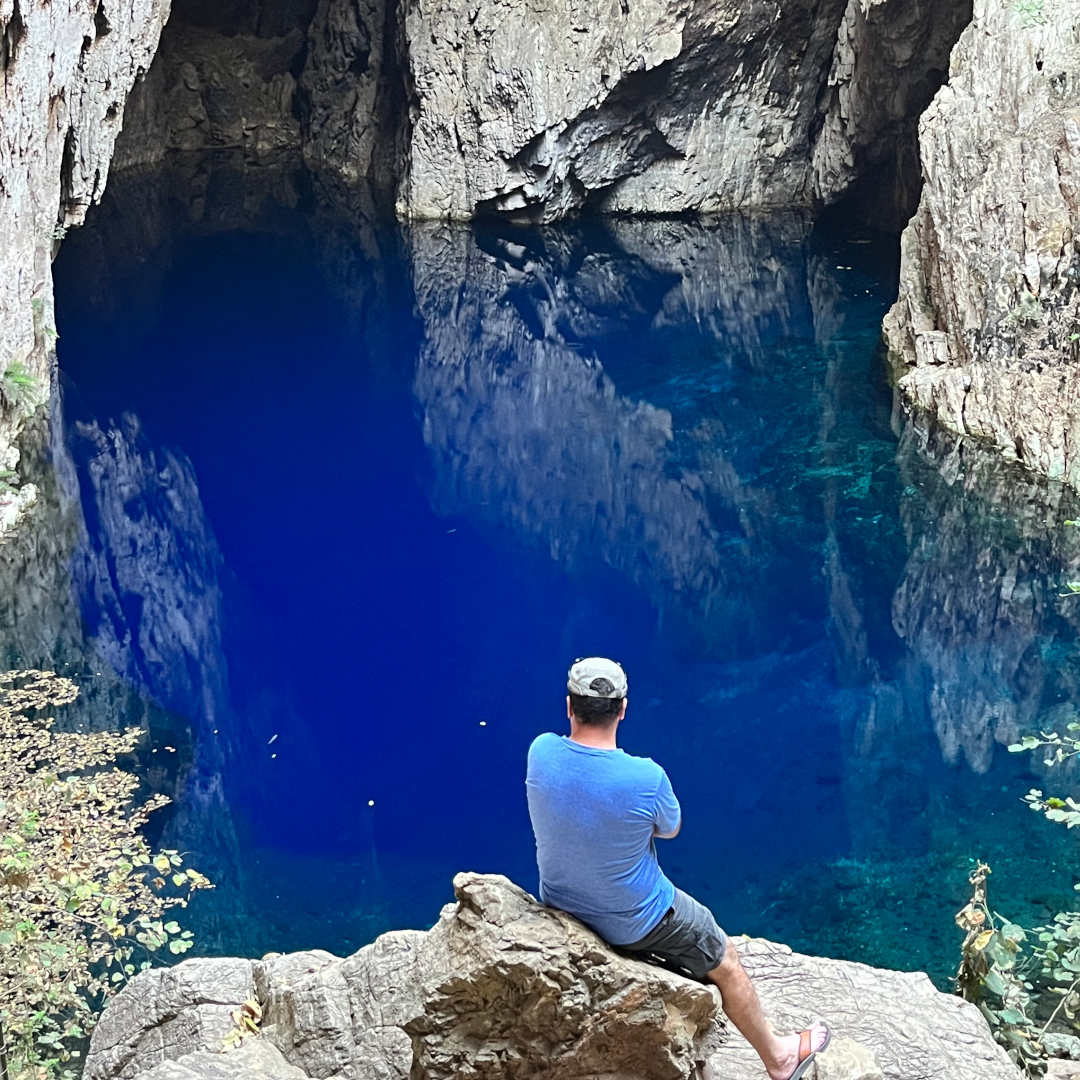
Tough riding on the Kariba approach
The road running south of Lake Kariba starts about 10km north of Karoi, where it is a tar road for the first section. However, our Garmin GPS, loaded with Tracks4Africa maps, must have been set to ‘shortest distance’. It instructed us to turn west within the middle of Karoi itself and take a shorter distance along a dirt road. Tim decided to ignore earlier plans and the advice from locals (and Carolyn) and turned onto the dirt road. This turned out to be a mistake – extremely challenging for the motorbikes, which weigh over 250kg when fully loaded. (Carolyn has probably forgiven Tim now.)
Despite both of us having toured extensively off-road in 13 African countries and done multiple off-road and sand riding training courses, we had our work cut out for us. There were patches of deep sand and poor-quality road surface, which made riding difficult. We were often riding with stones rolling under the tyres that – even when deflated – made us feel like we were riding on marbles. We advise all but the most experienced adventure motorcyclists who have done sand riding training to go further north on the A1 before turning west. Of course, it may change after the rains or when it is graded again! The road we took would be OK for most 4x4s.
We rejoined the main road at Birimhawe, rather exhausted and in need of rehydrating.
But, on we went to join some of the International Anti-Poaching Foundation (IAPF) leadership at two concessions where they are actively returning conservation areas to better condition.
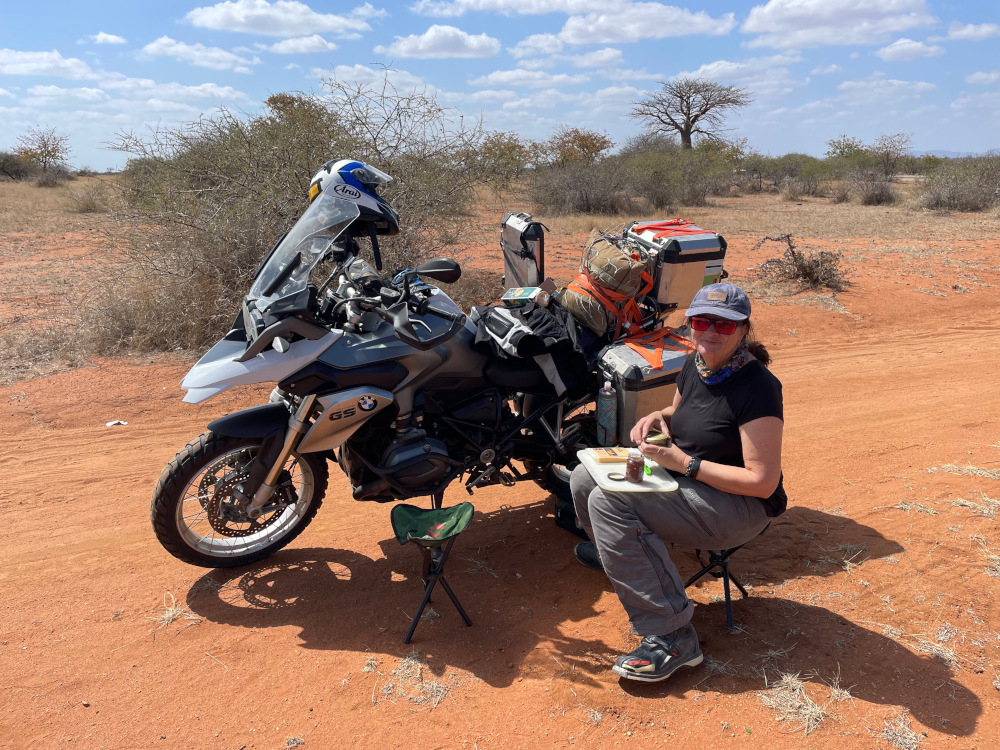
The perils of sand riding
We were exhausted when we turned off onto the road into Manyuli, southwest of Matusadona National Park, just 35km before Siabuwa. This protected zone, in the broader Kavango-Zambezi Transfrontier Conservation Area, is not open to the general public, as it is a conservancy being re-established as a Big Five area. We found it very sandy again and difficult to ride, with the sand feeling sticky and soft. The sun was setting and we had to make a difficult call. By this stage Carolyn had a mixture of dehydration and fatigue and said she could not go further. Because this is an area with many wild animals, safety was an issue. In addition, Tim’s bike had developed a loose wire somewhere and was starting unreliably. This needed to be fixed in daylight, but was too risky to take further.
The decision: Tim had to leave Carolyn there and ride fast on her bike – before the sun set – to get a 4×4 at Manyuli camp and come back to fetch her. The road to Manyuli was a mixture of some lovely tweespoor and then thick (!) sand along the 13km to the camp. Everything went well ‘surfing’ the sand pretty fast – until hitting a rock buried just under the surface of a bump. And that was it for Tim: off the bike and into the bushes with a few broken ribs.
No choice but to pick up the fully loaded bike and head on with those pesky ribs. Tim went back with others to fetch Carolyn just before sunset. After hiding his bike in the bushes, we returned to Manyuli for a delicious IAPF-cooked supper and a few beers looking over the Ume River. Stunning!
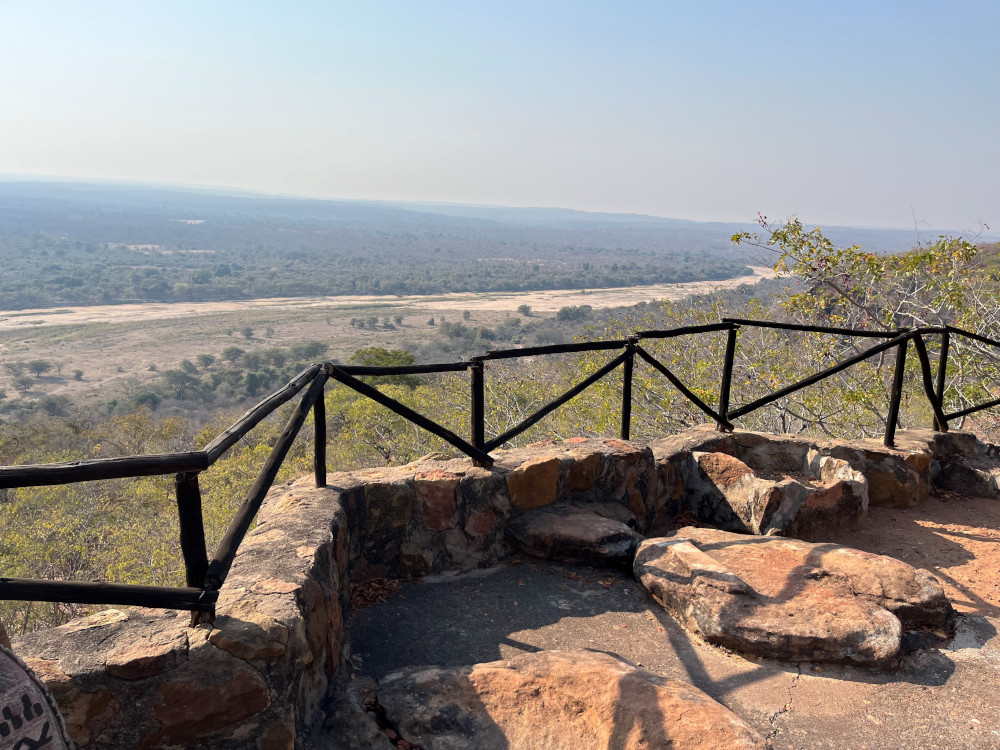
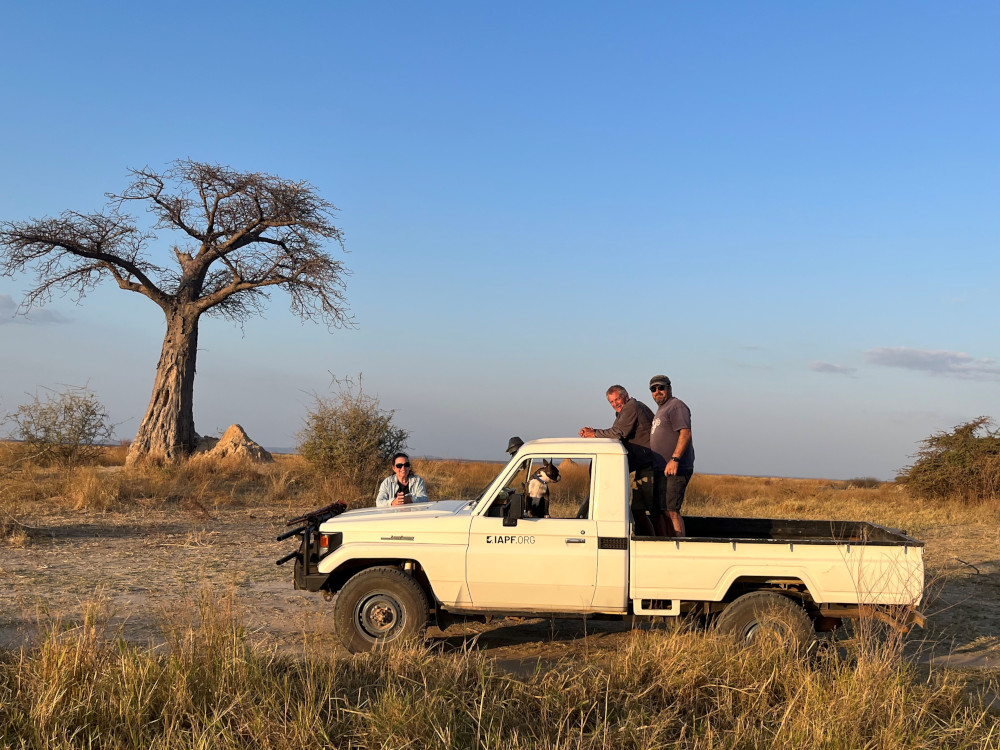
Inspiring work on Lake Kariba
The next morning, after riding out on the one bike and picking up the other one hidden in the bushes, we returned to the main road, heading further west to Siabuwa. The road to Lake Kariba from just east of Siabuwa into the IAPF base at Songa was a dream for experienced motorcyclists. It is tough but firm, even if very rocky over much of the undulating 60km, as we meandered our way to the lake through the most beautiful hills and two small villages. We were able to get close to Songa, and then escorted the last 10km by the IAPF crew, to prevent us being harassed by some rather pesky elephants that are resident in the area.
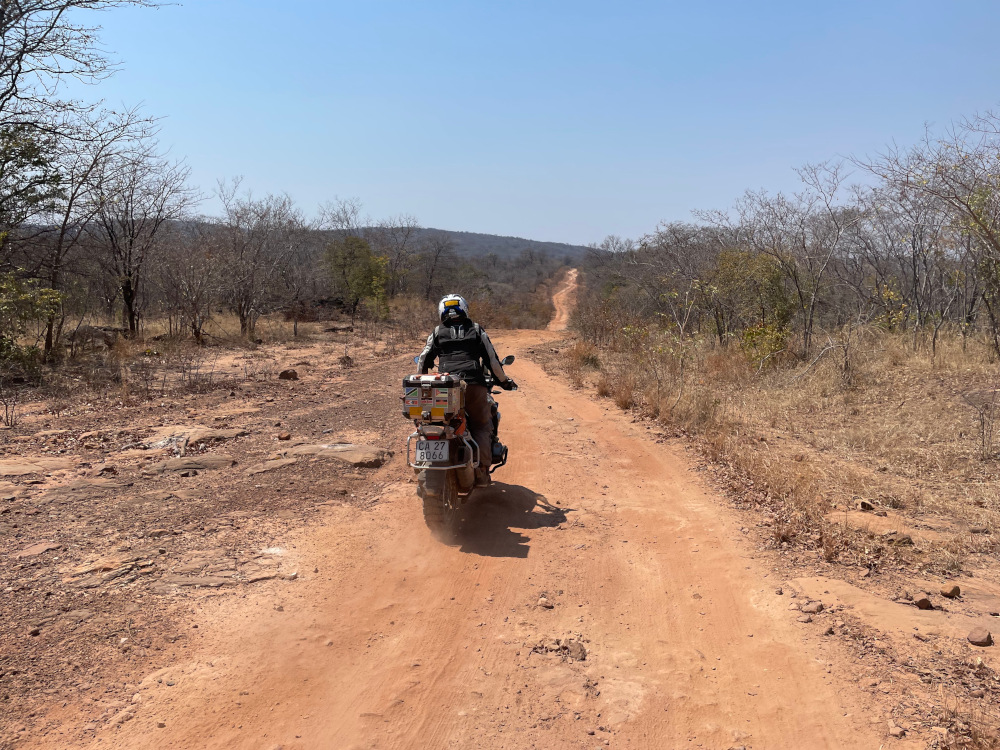
What an incredible four days we had on the lake, witnessing the amazing work of the women-only anti-poaching rangers, as well as the community development projects in the region funded by the IAPF. We are both virology specialists and spent time with the entire team talking about COVID and HIV. Tim, a medical doctor, then spent two afternoons seeing patients in the clinic, which is also funded by the foundation. These are amazing people – committed to nature conservation and the communities that surround them.
The ride out from Songa was equally enjoyable as we transitioned rapidly towards Binga. After this point it is tar, although finding tar amongst millions of potholes is sometimes challenging. We had wanted to camp in Hwange National Park main camp, but it again was not possible on the motorbikes. So, we had a pleasant and relaxing evening at Hwange Safari Lodge, going on a game viewing drive with the lodge, which was fantastic.
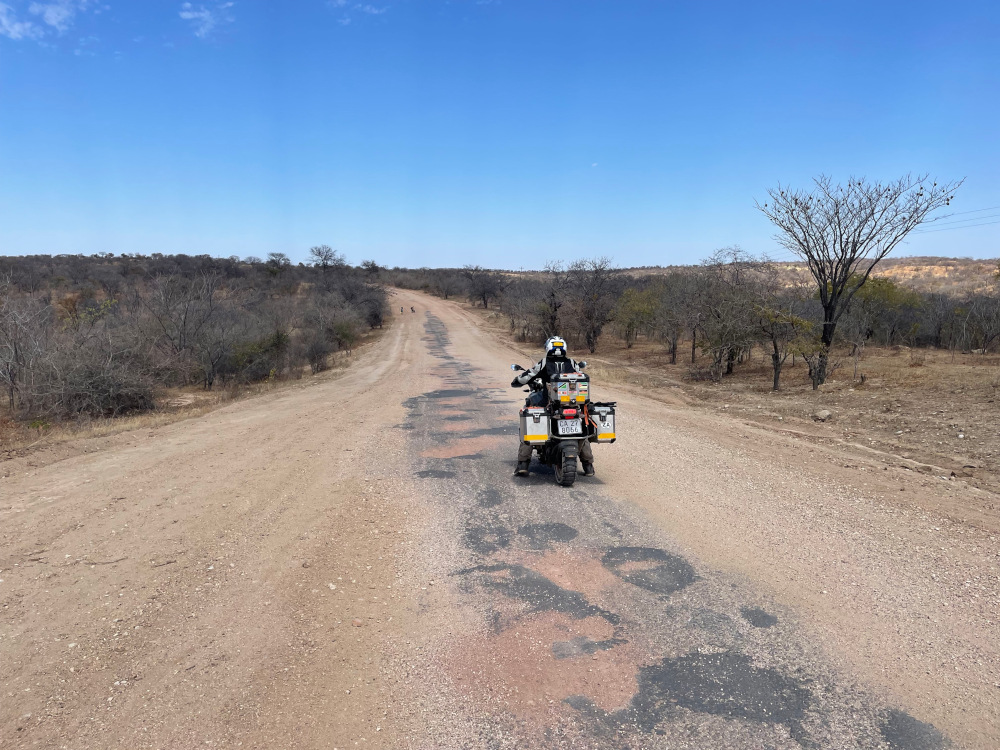
The return journey
The trip down south then started in earnest, with a wonderful overnight stay with family in Bulawayo. We crossed into Botswana through the incredibly pleasant Plumtree border post (highly recommended!) and then out into South Africa, south of Gaborone, into Mahikeng. Staying in Vryburg is interesting but essentially it was a transition spot for us on our way to Augrabies Falls National Park, where we stayed in the national park chalets. The entire Augrabies park is spectacular and the evening walks on two nights to the falls – which are lit up – were stunning. The day walk to Moon Rock was amazing. Go there!

The last two days of riding were along some of our favourite SA roads, from Augrabies to Calvinia and then onto Cape Town. The trip started with a delicious brunch at the Pienk Padstal (farm stall) in Kakamas, and then onto the tarmac R27 southward bound. In Calvinia, we stayed in the rather eclectic, pleasant Magic Garden self-catering joint. Dinner out at Blou Nartjie was a real pleasure.
Then homeward bound on the last day of dirt road riding. The R364 via Botterkloof Pass is always a treat, with flowers on display and the botterbome full of leaves.
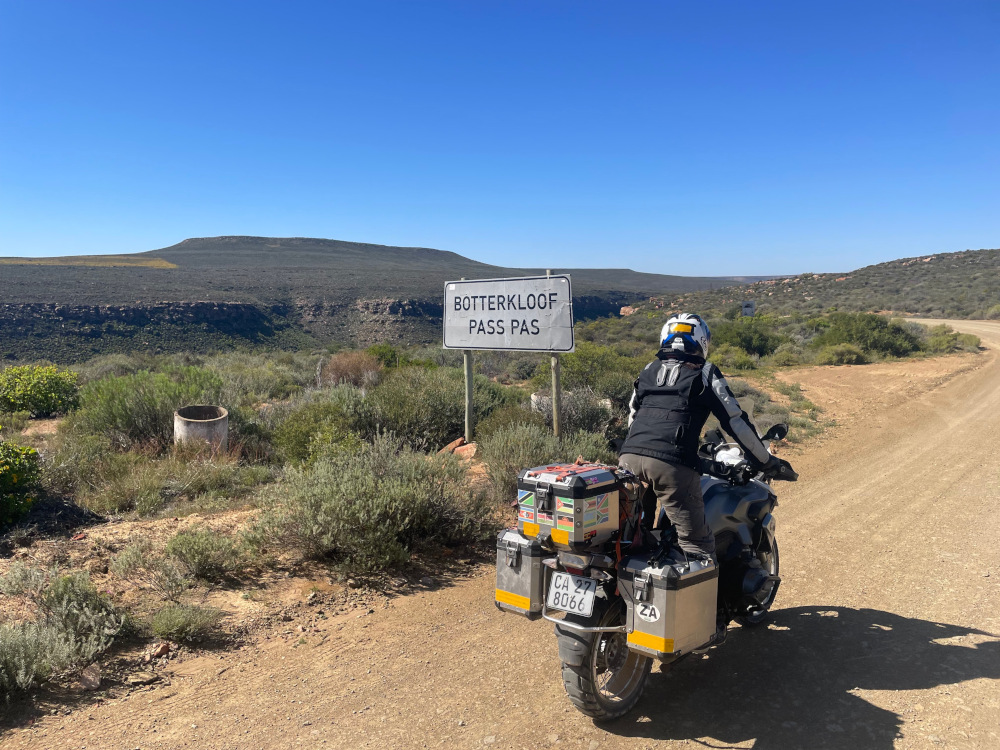
Impressions of Zimbabwe
The whole trip was amazing. Did we do the right thing taking the two motorbikes rather than the 4×4? Absolutely! The physical adventure with all the intimacy of riding the beautiful roads of Zimbabwe seems magnified by not being in a tin-can. The temperatures were glorious in August to September, and the people as generous as always.
Zimbabwe is a complicated space, but visiting it should be on everyone’s bucket list.
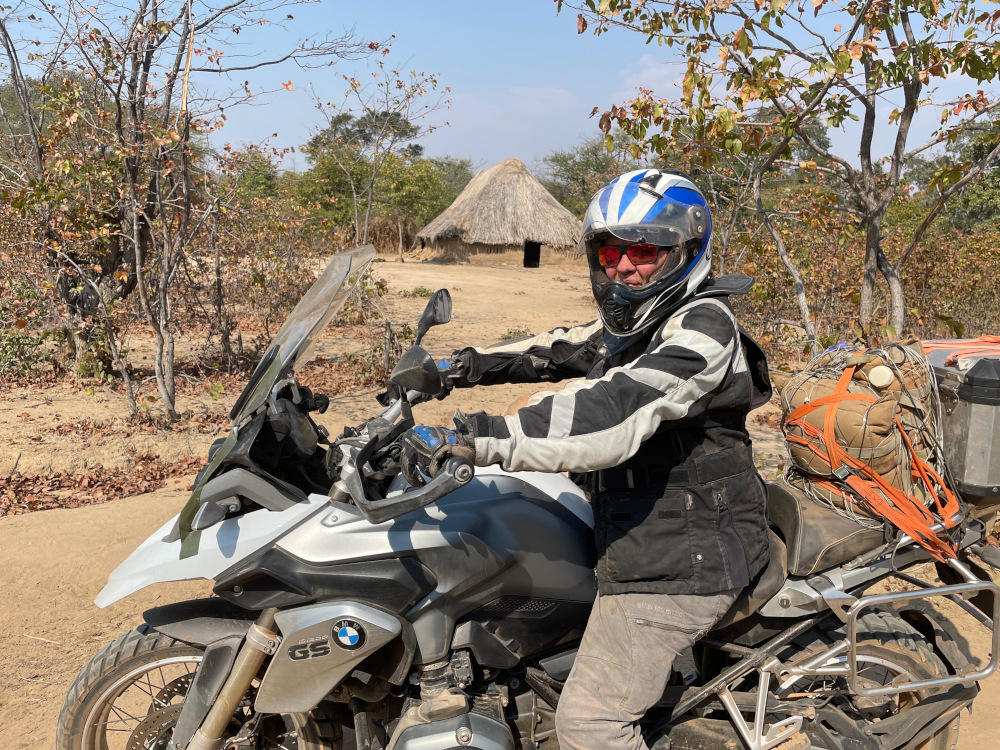
Top tips for visiting Zimbabwe by motorbike
- Take your best friend with you. #luckiestguy #luckiestwoman
- Don’t fight the assistance offered by border ‘agents’. They are offering a legitimate service, even if unconventional. They are trying to make money too, and our experience was good.
- Factor in time to cross.
- Plumtree border post is fantastic. Choose it if you can.
- If on a motorbike, plan to visit conservancies rather than national parks – they won’t let you into parks with wildlife.
- Try not to fall off your motorbike too often. It hurts sometimes, and picking up big bikes (weighing more than 250kg fully loaded) many times is exhausting.
- Ride southern Africa in winter/spring – it is dry, but mainly warm.
- Remember that settings on Garmin devices may change after rebooting.
- Local residents know the roads best – better than Garmin and Tracks4Africa. [If you get good route advice on the ground, please relay to Tracks4Africa so other overlanders will also benefit.]
- Many roads in remote settings are not maintained. Remember to be prepared to either tough it out, or have enough time to turn around and go back if impassable.
- Get fit beforehand if you plan to go on dirt roads. Be ready for unexpected challenges. On our longest day, our record for calories spent was 7,000!
- Do off-road and sand-riding courses before doing these trips. It will make it safer for you and enable you to get to so many more places.
- Lake Kariba is a gorgeous environment. Explore it.
- Try to engage with a community of people doing good work – there are amazing people out there.
- Zimbabwe is awesome.
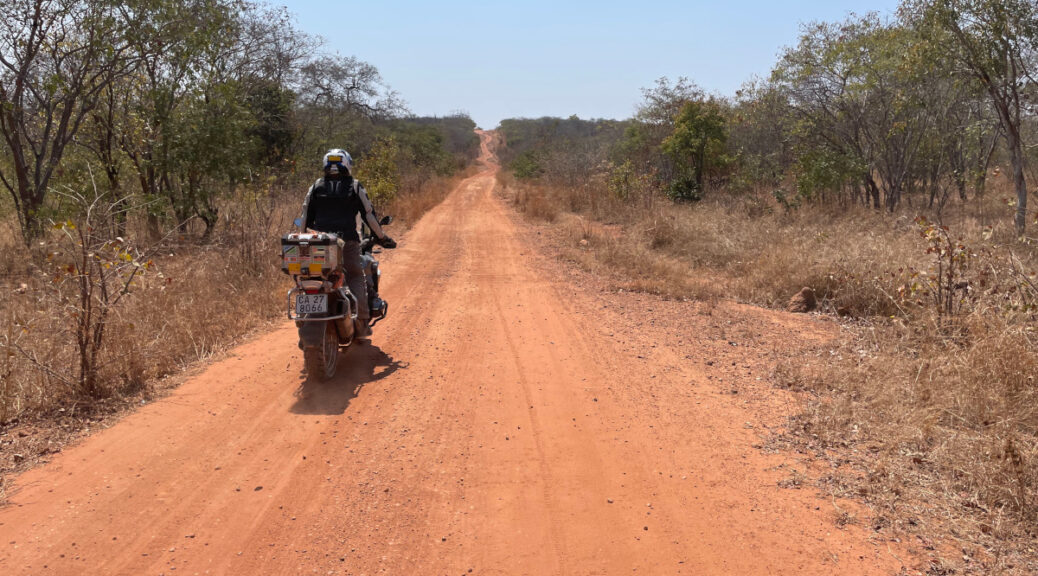

I can confirm their impressions of the Plumtree border post and highly recommend it. Apart from the Zimbabwe and Botswana posts themselves, the roads between there and Bulawayo and there and Gaborone are in good condition.
Thanks for confirming the experience on the ground.
I’m from Zimbabwe, I just like how you put my country to the world. I love biking I cannot afford one but I love it.Keep selling that country do that several time o hope you enjoyed..
Most enjoyable trip account, kudos to the authors.
Brave, and adventurous! I have no intention of doing Zimbabwe on a motorbike, but enjoyed reading about it, and I loved your photos!